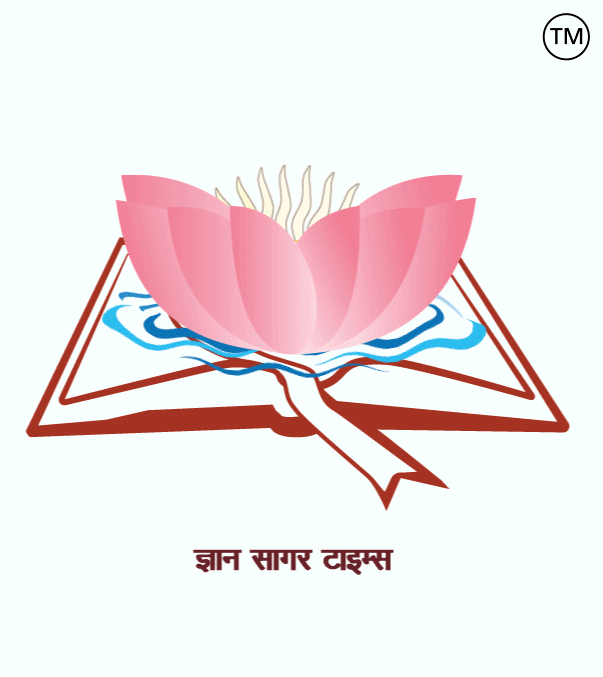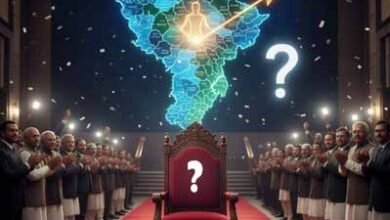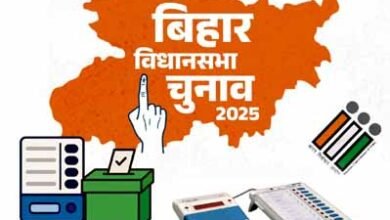
वन्दे मातरम् का विरोध पहले भी आज भी…?
“वन्दे मातरम्” महज़ एक राष्ट्रिय गीत ही नहीं, बल्कि भारतीय स्वतंत्रता संग्राम का एक महामंत्र रहा है. बंकिम चंद्र चटर्जी द्वारा वर्ष 1875 में रचित यह गीत, जो बाद में उनके उपन्यास ‘आनंदमठ’ (1882) का हिस्सा बना, इसने देश की जनता में राष्ट्रवाद और देशभक्ति की एक अमिट भावना का संचार किया। इसके बावजूद, यह गीत अपने जन्म से लेकर वर्तमान तक लगातार विवादों के केंद्र में रहा है.
“वन्दे मातरम्” की रचना बंकिम चंद्र चट्टोपाध्याय ने अपने उपन्यास आनंदमठ में की थी. इसमें भारत माता को देवी दुर्गा के रूप में चित्रित किया गया है. यह गीत स्वतंत्रता सेनानियों के लिए प्रेरणा का स्रोत बना. “वन्दे मातरम्” का उद्घोष ब्रिटिश शासन के विरुद्ध विद्रोह का प्रतीक बन गया.
वन्दे मातरम् का विरोध मुख्य रूप से इसके धार्मिक प्रतीकात्मकता और राजनीतिक निहितार्थों से जुड़ा रहा – इस गीत में भारत भूमि को देवी दुर्गा और अन्य हिंदू देवियों के रूप में चित्रित किया गया है (जैसे: “त्वं हि दुर्गा दशप्रहरणधारिणी”). मुस्लिम समुदाय के एक वर्ग ने इस पर आपत्ति जताई, उनका मानना था कि मातृभूमि को देवी मानकर उसकी पूजा करना उनके एकेश्वरवादी सिद्धांतों के विपरीत है.
वर्ष 1905 के बंगाल विभाजन और उसके बाद ‘वन्दे मातरम्’ की बढ़ती लोकप्रियता ने अंग्रेजों को हिंदुओं और मुसलमानों के बीच दूरियां बढ़ाने का मौका दिया। वहीँ, वर्ष 1909 में मुस्लिम लीग के अमृतसर अधिवेशन में गीत का खुला विरोध हुआ, जहां इसे ‘सांप्रदायिक और इस्लाम विरोधी’ करार दिया गया।
वर्ष 1937 में कांग्रेस ने मुस्लिम नेताओं की आपत्तियों को ध्यान में रखते हुए केवल पहले दो छंदों को ही राष्ट्रगीत के रूप में स्वीकार किया। यह निर्णय धर्मनिरपेक्षता और राष्ट्रीय एकता के संतुलन के प्रयास के रूप में देखा गया. वहीँ, दूसरी ओर इस फैसले से न तो पूर्ण रूप से गीत के समर्थक संतुष्ट हुए और न ही विरोधी। गीत समर्थकों ने इसे ‘तुष्टिकरण’ माना, जबकि जिन्ना जैसे नेताओं ने गीत को पूरी तरह त्यागने की मांग की.
स्वतंत्रता के बाद भी, ‘वन्दे मातरम्’ राष्ट्रीय गीत बना रहा (राष्ट्रगान के समान दर्जा), लेकिन इस पर विवाद खत्म नहीं हुआ. समय-समय पर जब भी शिक्षण संस्थानों या सरकारी कार्यक्रमों में गीत का अनिवार्य गायन करने का आदेश आता है, तो कुछ धार्मिक और सामाजिक संगठन इसका विरोध करते हैं. वे इसे ‘धार्मिक स्वतंत्रता के अधिकार’ (संविधान के अनुच्छेद 25) का उल्लंघन मानते हैं, क्योंकि उनके लिए यह धार्मिक आस्था से जुड़ा मामला है, न कि महज़ देशभक्ति का. वहीँ, भारतीय न्यायालयों ने आमतौर पर यह स्पष्ट किया है कि देशभक्ति दिखाने के लिए गीत का गायन अनिवार्य नहीं है और इसे स्वेच्छा से गाया जा सकता है.
“वन्दे मातरम्” का विरोध इस बात को दर्शाता है कि धार्मिक भावनाएँ और राष्ट्रवाद के प्रतीक कभी-कभी टकरा सकते हैं. भारत जैसे बहुधार्मिक देश में राष्ट्र प्रतीकों का चयन करते समय सभी समुदायों की संवेदनाओं का ध्यान रखना आवश्यक है.
वर्तमान राजनीति में भी यह गीत अक्सर एक विवादित मुद्दा बन जाता है. सत्तारूढ़ दल (जैसे भाजपा) कांग्रेस पर वर्ष 1937 में गीत के ‘महत्वपूर्ण पदों’ को हटाकर देश को बांटने के ‘बीज बोने’ का आरोप लगाते हैं. दूसरी ओर, विरोध पक्ष (जैसे कांग्रेस) भाजपा पर राष्ट्रवाद की राजनीति करने और यह दावा करने का आरोप लगाता है कि भाजपा/आरएसएस ने स्वयं स्वतंत्रता संग्राम के दौरान इस गीत का कभी सम्मान नहीं किया था. इस तरह, ‘वन्दे मातरम्’ राजनीतिक दलों के लिए ‘राष्ट्रवाद की कसौटी’ और ‘तुष्टिकरण के आरोप’ लगाने का एक शक्तिशाली उपकरण बन गया है, जिससे इसका मूल देशभक्ति का संदेश अक्सर विवाद की भेंट चढ़ जाता है.
“वन्दे मातरम्” भारतीय इतिहास और भावनाओं का अभिन्न हिस्सा है. परंतु इसके कुछ धार्मिक प्रतीकों के कारण यह सर्वसमावेशी राष्ट्रगीत बनने में असमर्थ रहा.समाज को यह समझना होगा कि राष्ट्रप्रेम और धार्मिक आस्था एक-दूसरे के विरोधी नहीं, बल्कि पूरक हो सकते हैं. वन्दे मातरम् – मूल गीत इस प्रकार है: –
|
वन्दे मातरम् सुजलां सुफलां मलयजशीतलाम् शस्यश्यामलां मातरम् वन्दे मातरम्
शुभ्रज्योत्स्ना पुलकितयामिनीम् फुल्लकुसुमित द्रुमदलशोभिनीम् सुहासिनीं सुमधुर भाषिणीम् सुखदां वरदां मातरम् वन्दे मातरम्
सप्तकोटि कन-ठ-कल-कल-निनाद-कराले द्विसप्तकोटि भुजैर्धृतखरकरवाले अबला केनो मा एतो बले बहुबलधारिणीं नमामि तारिणीं रिपुदलवारिणीं मातरम् वन्दे मातरम्
तुमि विद्या तुमि धर्म तुमि हृदि तुमि मर्म त्वं हि प्राणाः शरीरे बाहुते तुमि मा शक्ति हृदये तुमि मा भक्ति तोमारै प्रतिमा गड़ि मन्दिरे-मन्दिरे वन्दे मातरम्
त्वं हि दुर्गा दशप्रहरणधारिणी कमला कमलदलविहारिणी वाणी विद्यादायिनी नमामि त्वाम् नमामि कमलां अमलां अतुलां सुजलां सुफलां मातरम् वन्दे मातरम्
|
संजय कुमार सिंह
(पोलिटिकल, सहायक एडिटर) ,
ज्ञानसागरटाइम्स.
========== ========= ===========
Opposition to Vande Mataram, Then and Now…?

“Vande Mataram” is not merely a national song, but a powerful mantra of the Indian freedom struggle. Composed by Bankim Chandra Chatterjee in 1875, and later included in his novel ‘Anandamath’ (1882), this song instilled an indelible sense of nationalism and patriotism in the people of the country. Despite this, the song has been at the center of controversy from its inception to the present day.
“Vande Mataram” was composed by Bankim Chandra Chattopadhyay in his novel Anandamath. In it, Mother India is depicted as Goddess Durga. This song became a source of inspiration for freedom fighters. The slogan “Vande Mataram” became a symbol of rebellion against British rule.
The opposition to Vande Mataram has primarily been linked to its religious symbolism and political implications – the song depicts the land of India as Goddess Durga and other Hindu goddesses (such as: “Twam hi Durga Dashapraharanadharini”). A section of the Muslim community objected to it, believing that worshipping the motherland as a goddess was contrary to their monotheistic principles.
The 1905 partition of Bengal and the subsequent increasing popularity of ‘Vande Mataram’ gave the British an opportunity to widen the gap between Hindus and Muslims. In 1909, the song was openly opposed at the Amritsar session of the Muslim League, where it was declared ‘communal and anti-Islamic’.
In 1937, the Congress, keeping in mind the objections of Muslim leaders, accepted only the first two verses as the national song. This decision was seen as an attempt to balance secularism and national unity. However, this decision neither fully satisfied the supporters of the song nor its opponents. Supporters considered it ‘appeasement’, while leaders like Jinnah demanded that the song be completely abandoned. Even after independence, ‘Vande Mataram’ remained the national song (with the same status as the national anthem), but the controversy surrounding it did not end. From time to time, whenever an order is issued making the singing of the song mandatory in educational institutions or government programs, some religious and social organizations protest against it. They consider it a violation of the ‘right to religious freedom’ (Article 25 of the Constitution), as for them it is a matter connected to religious faith, and not merely patriotism. Meanwhile, Indian courts have generally clarified that singing the song is not mandatory to show patriotism and it can be sung voluntarily.
The opposition to “Vande Mataram” reflects how religious sentiments and symbols of nationalism can sometimes clash. In a multi-religious country like India, it is essential to consider the sensitivities of all communities when selecting national symbols.
In current politics, this song often becomes a controversial issue. The ruling party (like the BJP) accuses the Congress of ‘sowing the seeds’ of division in the country by removing the ‘important verses’ of the song in 1937. On the other hand, the opposition (like the Congress) accuses the BJP of playing politics of nationalism and claims that the BJP/RSS themselves never respected this song during the freedom struggle. Thus, ‘Vande Mataram’ has become a powerful tool for political parties to use as a ‘test of nationalism’ and to level ‘accusations of appeasement’, often overshadowing its original patriotic message with controversy.
“Vande Mataram” is an integral part of Indian history and emotions. However, due to some of its religious symbols, it has been unable to become a truly inclusive national song. Society must understand that patriotism and religious faith are not mutually exclusive, but can be complementary. Vande Mataram – The original song is as follows:-
|
Vande Mataram Sujalam Suphalam Malayaja Shitalam Shasyashyamalam Mataram Vande Mataram
Shubhrajyotsna Pulakita Yaminiim Phullakusumita Drumadala Shobhiniim Suhasiniim Sumadhura Bhashiniim Sukhadam Varadam Mataram Vande Mataram
Saptakoti Kantha Kalakala Ninada Karale Dvisaptakoti Bhujair Dhrita Kharakaravale Abala Keno Ma Eto Bale Bahubaladhariniim Namami Tariniim Ripudalavariniim Mataram Vande Mataram
Tumi Vidya Tumi Dharma Tumi Hridi Tumi Marma Tvam Hi Pranah Sharire Bahute Tumi Ma Shakti Hridaye Tumi Ma Bhakti Tomarai Pratima Gadi Mandire-Mandire Vande Mataram
Tvam Hi Durga Dashapraharanadharini Kamala Kamaladalaviharini Vani Vidyadayini Namami Tvam Namami Kamalam Amalam Atulalam Sujalam Suphalam Mataram Vande Mataram.
|
Sanjay Kumar Singh.
(Political, Assistant Editor),
Gyansagartimes.





